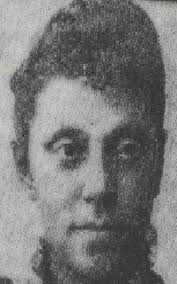Gertrude Bustill Mossell

Gertrude Bustill Mossell (July 3, 1855 – January 21, 1948)[1] was an African-American author, journalist and teacher.
After an early career contributing articles to Philadelphia newspapers, she became women's editor of the New York Age from 1885 to 1889, and of the Indianapolis World from 1891 to 1892. She strongly supported the development of black newspapers, and encouraged more women to enter journalism.
She was the daughter of Charles and Emily Bustill and she came from a prominent family. Her great-grandfather, Cyrus Bustill, served in George Washington's troops as a baker and after the War of Independence, he started a successful bakery in Philadelphia. The elder Bustill also co-founded the first black mutual-aid society in America, the Free African Society. Among the many other Bustills of distinction are Gertrude's great-aunt, abolitionist and educator Grace Bustill Douglass and her daughter Sarah Mapps Douglass, who followed in her mother's footsteps. Gertrude's most famous descendant was her nephew Paul Bustill Robeson.
Gertrude went to public school in Philadelphia, Pennsylvania at the Institute for Colored Youth and the Robert Vaux Grammar School. She delivered a graduation speech entitled "Influence," which impressed Bishop Henry McNeal Turner, editor of the African Methodist Episcopal newspaper, The Christian Recorder. Bishop Henry McNeal published "Influence" and invited Bustill to contribute poetry and essays to the newspaper. Years later, Bustill's articles on political and social issues, with a heavy emphasis on women's rights and responsibilities, were being read in a number of periodicals, including the AME Church Review, the Philadelphia Times, the Philadelphia Echo, and the Independent. For a time, she edited the Woman's Department of the New York Freeman, the Indianapolis World, and the New York Age.
After graduating from Robert Vaux Grammar School, she taught school for several years in Philadelphia and in other places. It was as a journalist, however, that Gertrude Bustill distinguished herself. This was at a time when women journalists were extremely rare.
Gertrude Bustill was managing a career and a family life: in 1893 she married a leading Philadelphia physician, Nathan Frances Mossell, with whom she had two daughters. Around the time of her wedding, Mossell was working on an important little book: The Work of the Afro-American Woman (1894), which is a collection of essays and poems that recognized the achievements of black women in a range of fields. As scholar Joanne Braxton has pointed out, this book was for the black woman of the 1890s what Paula Giddings's When and Where I Enter was for the black woman of the 1980s.
As a woman with such strong feminist views, people found it odd that Gertrude published the book under her husband's initials. Braxton offers the following explanation: "By this strategy of public modesty, the author signaled her intention to defend and celebrate black womanhood without disrupting the delicate balance of black male-female relations or challenging masculine authority."
The year after The Work of the Afro-American Woman came out, Gertrude Bustill Mossell was busy helping her husband with the Frederick Douglass Memorial Hospital and Training School, which opened in 1895: she headed up the fundraising drive, raising $30,000, and went on to serve as president of its Social Service Auxiliary. Her other civic activities included organizing the Philadelphia branch of the National Afro-American Council. The only other book Gertrude Bustill Mossell wrote was a children's book, Little Dansie's One Day at Sabbath School (1902).
Notes
References
- Mossell, Gertrude E.H. Bustill (1855-1948), BlackPast.org
- Mrs. N. F. Mossell (1855-1948), AAWW Biographies
- Mrs. N.F. Mossell (Gertrude Bustill Mossell/Nathan Frances Mossell-her husband) Little Dansie's One Day at Sabbath School. Philadelphia : The Penn Printing and Publishing Co., 1902
- Mrs. N.F. Mossell (Gertrude Bustill Mossell/Nathan Frances Mossell-her husband) The Work of the Afro-American Woman. Philadelphia: Geo. F Ferguson Company, 1908.